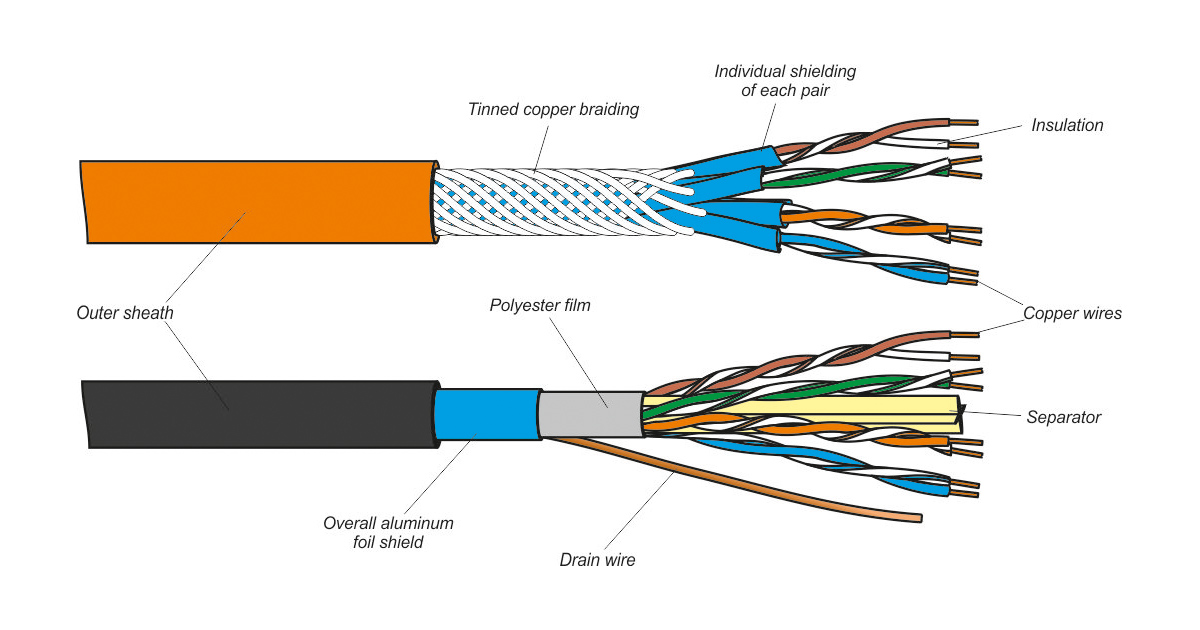Twisted Pair Wire

What is it?
Twisted pair wires consist of one or more pairs of single conductor wires twisted around each other to reduce electromagnetic interference.
- Categories: Twisted pair wires are classified into Category 1 through 7, though Categories 1, 2, and 4 are nearly obsolete.
- Twisting: The twisting of the wires helps reduce interference.
- Shielding: Additional shielding can further eliminate interference.
CAT cables
| UTP Category | Typical Use | Maximum Data Transfer Rate | Maximum Transmission Range | Advantages | Disadvantages |
|---|---|---|---|---|---|
| Category 1 | Telephone wire | <100 kbps | 5–6 kilometers (3–4 miles) | Inexpensive, easy to install and interface | Security, noise, obsolete |
| Category 2 | T-1, ISDN | <2 Mbps | 5–6 kilometers (3–4 miles) | Same as Category 1 | Security, noise, obsolete |
| Category 3 | Telephone circuits | 10 Mbps | 100 m (328 ft) | Same as Category 1, with less noise | Security, noise |
| Category 4 | LANs | 20 Mbps | 100 m (328 ft) | Same as Category 1, with less noise | Security, noise, obsolete |
| Category 5 | LANs | 100 Mbps (100 MHz) | 100 m (328 ft) | Same as Category 1, with less noise | Security, noise |
| Category 5e | LANs | 250 Mbps per pair (125 MHz) | 100 m (328 ft) | Same as Category 5. Also includes specifications for connectors, patch cords, and other components | Security, noise |
| Category 6 | LANs | 250 Mbps per pair (250 MHz) | 100 m (328 ft) | Higher rates than Category 5e, less noise | Security, noise, cost |
| Category 7 | LANs | 600 MHz | 100 m (328 ft) | High data rates | Security, noise, cost |
Why is it used?
Twisted pair wire is the most common form of wiring used in networks due to several factors:
- Cost-effective and easy to install
- Capable of carrying high data rates, though not the highest
- Prone to electromagnetic noise and can be easily wire-tapped
- Available in both shielded and unshielded versions for different levels of interference protection